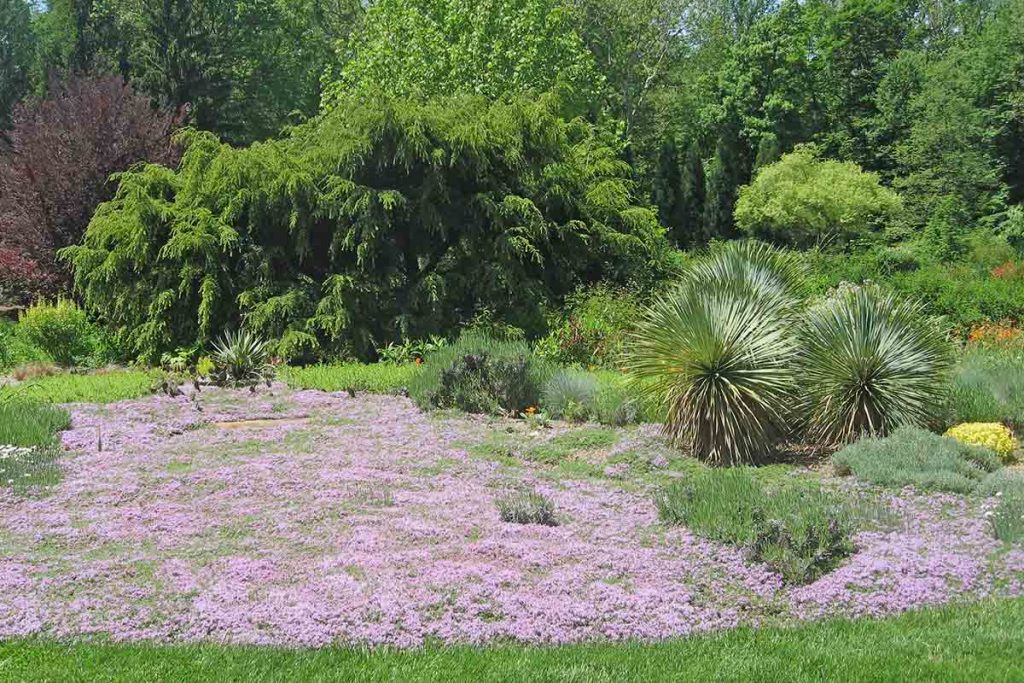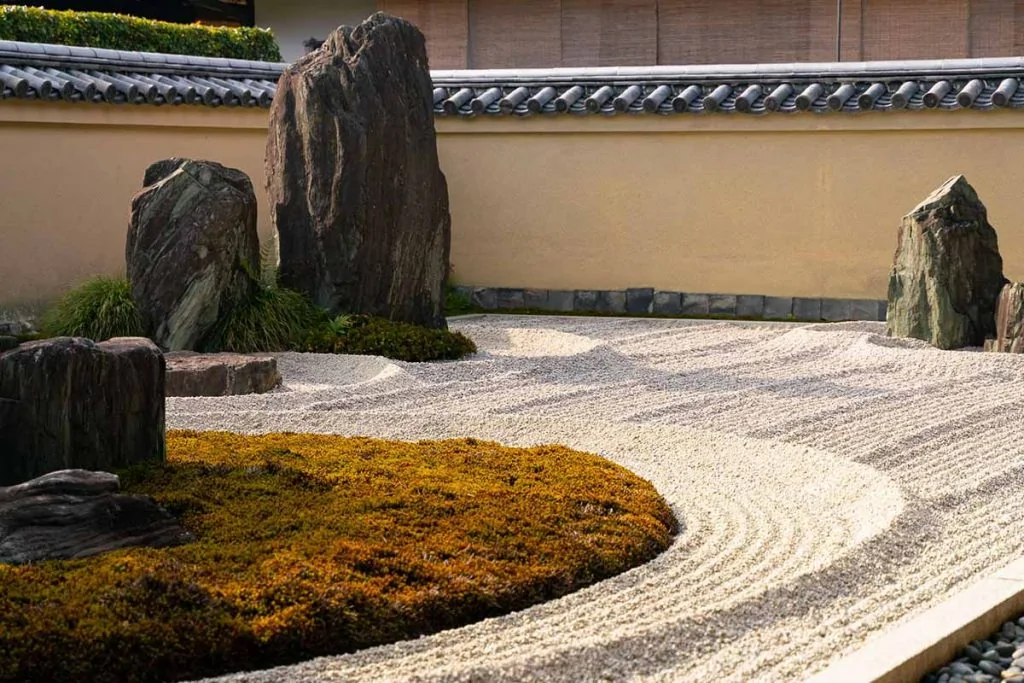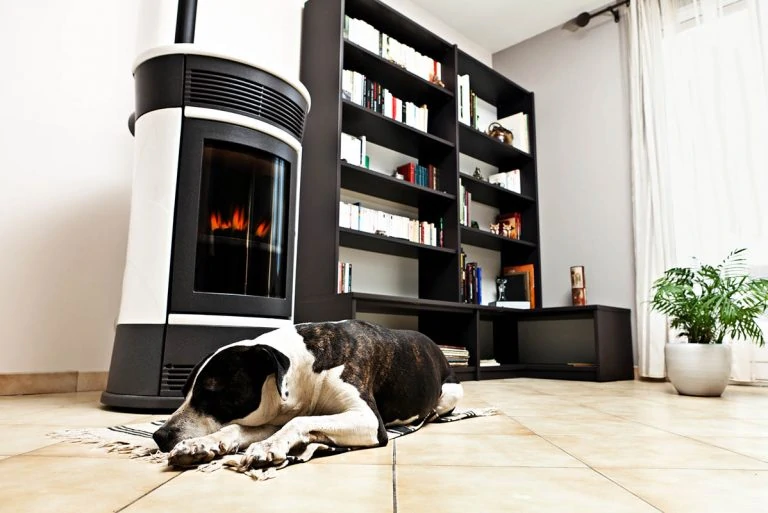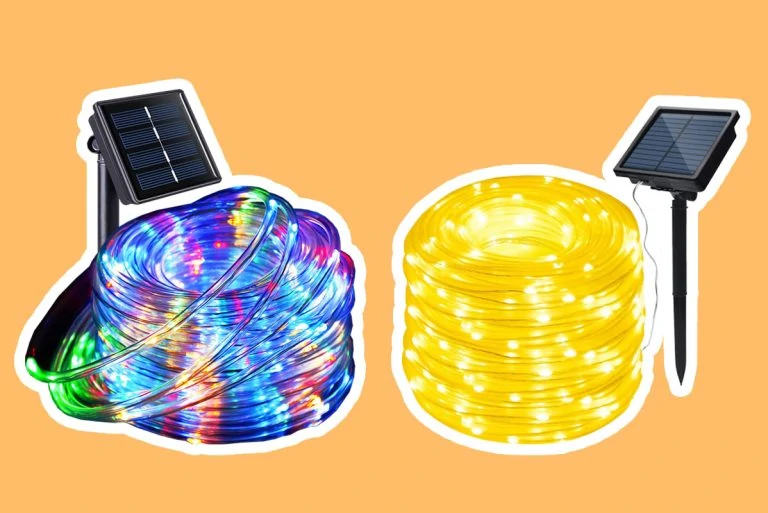A lush expanse of green grass is the stereotypical image of a well-maintained lawn. Unfortunately, not everyone has the opportunity to have a grassy blanket covering their garden.
You might be allergic to grass or grass pollen, which isn’t at all unusual, or you might not live in a place where growing standard lawn grass isn’t a full-time job.
You might also be understandably concerned about the environmental impact of grass lawns.
The good news is that there are many environmentally friendly lawn alternatives to grass on the market. Let’s take a look at some of the best eco friendly lawn alternatives available today.
Why opt for a fake lawn?
There are many reasons you might opt for a more eco-friendly lawn alternative; or indeed a fake lawn, including:
- You might be one of the 60 million people in the U.S alone who suffer from allergic rhinitis (hay fever). Grass releases a huge amount of pollen, and having a large expanse of it outside your window can turn your summer into an itchy, sneezy hell.
- You might live in a colder or hotter climate than Kentucky bluegrass, perennial ryegrass, or any of the more common lawn grasses can tolerate.
- You might be uncomfortable with the 1.5 inches of water per week needed to maintain a grass lawn, especially in light of the burgeoning global water crisis.
- You might not want to pay between $18 and $34 per square meter to get your lawn turfed and then have to continue to pay high lawn maintenance fees.
What are the best eco-friendly lawn alternatives?
When it comes to suggesting eco-friendly lawn alternatives, we’ve opted for organic options instead of synthetic grass.
Our stance is that organic is better than fake, and while synthetic grass is generally easy to source and maintain, the ecological fallout of using that much non-biodegradable plastic outweighs its other benefits.
1. Wildflower ‘meadow’
One of the prettiest lawn alternatives out there, and also possibly the easiest alternative to using specific lawn grass is to let your lawn lie fallow and let nature take its course.

In the words of Jeff Goldblum, “life….finds a way,” and most untended patches of earth will quickly sprout their own coverings of plant life.
If you don’t like the idea of a sprawling mass of unplanned growth, you can seed your lawn with wildflowers and ornamental grasses to add a layer of method to the madness.
This system works especially well if you’re able to include wildflowers and habitats that support local endangered species like bees.
Pros
- Having a wildflower lawn is super low effort to set up and plan.
- Local plants will be far more resistant to local environmental conditions and require less maintenance and watering.
- Wildflower lawn seeds are significantly less costly to buy than standard lawn grass.
- You’ll be providing a habitat for local insects, birds, and animals.
Cons
- Not having a neat lawn might conflict with your local homeowners’ association.
- It’s certainly not an option for those suffering from crippling hayfever.
2. Moss
Moss beds are great lawn alternatives and add lively vibrant colors and a lush thick velvety feel to your lawn. Because it stays at a consistent height for its growing life, moss doesn’t need to be mowed and, even better, as long as you’re in a suitable climate, it also doesn’t need to be watered.

If you don’t fancy having an entire moss lawn, you can also plant patches of moss to cut down on both maintenance and water cost. If you’re allergic to grass pollen, the good news is that most moss spores are non-allergenic.
Pros
- Because it grows to a consistent low height, moss doesn’t need to be mowed.
- You also won’t need to water your moss lawn, which makes it remarkably environmentally friendly.
- While it isn’t as resilient as traditional turf, you can occasionally walk on moss without killing it.
- Moss spreads rapidly, typically covering a lawn in just one growing season.
Cons
- You’ll need shade for your moss lawn to flourish, so if you live somewhere hot and sunny, moss is not for you.
3. Sedum
Sedum, also known as Stonecrop, is a huge family of plants with nearly 500 members. Because of their hardiness, mats of Sedum plants are often used as lawn alternatives or grass replacements on lawn and grass roofs.

Sedum mats used in lawns are generally evergreen and flower between April to the end of October, meaning you get all the benefits of a carpet of green over your lawn, and a burst of colorful flowers towards the end of the year.
Pros
- Just lay the mats over freshly tilled ground to install..
- Sedum plants are famous drought tolerant and capable of sustaining long periods of very dry weather.
- Your lawn will burst into a riot of color between April and October.
Cons
- Sedum isn’t suitable for high traffic areas and can quickly become a flattened smashed mess with heavy foot traffic.
4. Wood chippings or bark
If you have been near a children’s play park recently, you’ll have seen how wood chippings are useful as inexpensive ground cover.

As long as you buy play-grade wood chips, you can do exactly the same thing with your lawn. Wood or bark chips don’t cost much and are very easy to install. Simply spread them around yourself.
If you have children, they’ll also provide the same soft base for a play area as they do in parks, making bark one of the easiest and most practical lawn alternatives on our list
Pros
- Wood or bark chips are very inexpensive.
- You can install them yourself with minimal effort.
- They make a great children’s play area.
- They can improve the quality of the soil by trapping moisture.
Cons
- Wood chips will rot, and even the play-grade ones will need replacing about once a year.
5. Creeping Thyme
If you’re looking for a beautiful organic lawn alternative for a low foot traffic area, then Red Creeping Thyme is an excellent choice.

The thyme grows into a thick carpet of foliage that stays green for most of the year before turning a deep bronze during the winter.
It flowers in early summer, covering your lawn in tiny bright red flowers and a beautiful scent. One of the best lawn alternatives out there for people who prefer fragrant plants and an offbeat aesthetic.
Pros
- A hardy plant, Red Creeping Thyme is very drought tolerant.
- Because it grows as a mat, you won’t need to worry about mowing your lawn.
- The flowers add an amazing splash of color during the summer.
Cons
- To get your Red Creeping Thyme to grow, you’ll need to kill off all its competitors, especially grass, in the area beforehand, making installation rather demanding.
6. Chamomile
Beloved by calming tea drinkers everywhere, Chamomile is also one of the more popular lawn alternatives out there. It spreads quickly, enjoys the sun, and carpets your lawn in both a spray of little white flowers and a delightful smell.

The only real downsides to Chamomile are that it does need a good amount of sunshine to reach its full potential and that some varieties of Chamomile are toxic to animals.
Pros
- Unlike turf, Chamomile will happily grow on slopes and uneven ground.
- While you still need to mow your Chamomile, you won’t need to do it anywhere near as often as you would with grass.
- Despite its delicate structure and scent, Chamomile is very drought-resistant, making it one of the more hardy lawn alternatives out there
Cons
- You’ll need to make sure the variations of Chamomile that are best suited for your climate aren’t toxic.
- Chamomile loves the sun, and you’ll only get partial coverage if you plant it in the shade.
7. Gravel
An obvious choice as a lawn alternative, gravel is cheap, easy to install, and won’t rot or need to be replaced, unlike wood chips.

Depending on the size of your lawn, distributing your gravel might be hard work just because of the weight, but the only major drawback to gravel is that it doesn’t make your lawn a particularly nice place to hang out.
Pros
- Gravel is easy to source and inexpensive.
- It won’t rot or need to be replaced.
- Unsurprisingly, you won’t need to mow or water it, and it’s very drought resistant!
Cons
- Gravel certainly isn’t the comfortable choice, and might not be the best idea if you have small children.
8. Soleirolia soleirolii
More commonly known as baby’s tears or mind your own business, Soleirolia soleirolii is an excellent lawn alternative for shady areas.

The tiny leaves of the plant grow into a shag-pile-like deep carpet of green that is perfectly capable of growing over large rocks and fallen logs.
Relatively maintenance-free, Soleirolia soleirolii is also quite hardy, surviving both periodic dry spells and frost.
Pros
- Soleirolia soleirolii is virtually maintenance-free and doesn’t require watering.
- The plant spreads rapidly and in shaded conditions will quickly cover the ground.
- As a lawn alternative, Soleirolia soleirolii is hardy and able to survive cold winters and summer droughts.
Cons
- Soleirolia soleirolii grows very rapidly, and you’ll need to work to make sure it doesn’t spread outside of the areas you want it to grow in.
9. Corsican mint
Similar to Red Creeping Thyme, Corsican mint grows out into a thick green carpet that can match the lushness of some traditional lawns, with the added benefits of a distinctly minty smell. It’s one of the best lawn alternatives for people who like the wild, textured look that creeping plants provide.

While it is hardy and can take water shortages and winter forests in its stride, Corsican mint isn’t suitable for anywhere you expect to see significant foot traffic.
Pros
- Growing quickly into a thick carpet, Corsican mint is an excellent groundcover alternative to grass.
- The plant is suitable for growing in USDA plant hardiness zones 7 through 9, making it suitable for large parts of the U.S.
- Smells lovely when stepped on and one of the few lawn alternatives that can be used to cook with.
Cons
- Self-seeding and aggressive, Corsican mint can quickly take over your garden if you let it grow out of control.
10. Clover
If you happen to live in an area with poor soil quality that snuggles to support nitrogen-hungry lawn grasses, there is an alternative. Clover not only thrives in low-quality soil, but it actually helps to replenish the ground.

As a nitrogen fixating plant, it can supply its own nutrients, which are returned to the soil as the plant dies.
Clover works best when overseeded amongst wild grasses as a lawn alternative, where its drought tolerance and nitrogen fixating nature will mean you have to water and fertilize it less while your lawn stays pleasantly green.
Pros
- Clover grows well in poor soil conditions and helps to replenish the soil and fertilize the plants around it.
- The drought tolerance and nitrogen-fixating nature of Clover mean it’s relatively low maintenance.
- Pet urine won’t leave brown patches on your Clover lawn.
Cons
- As a relatively short-lived perennial, Clover will require reseeding every 2-3 years.
11. Eco-Lawn
Eco-Lawns are lawn alternatives usually composed of grass seeds combined with other ground covers, such as micro leaf clover or moss, to create a more environmentally friendly approach to grass lawns.
While the exact nature of the product will depend on which Eco-Lawn mixture you buy, they all have certain characteristics in common, such as being drought resistant, not needing to be fertilized, and requiring little or no mowing.
Pros
- It looks the most like grass, because it essentially is grass, just more environmentally friendly grasses mixed with other ground covers.
- Less maintenance, fertilization, and mowing than standard lawn grasses.
- The hardier grass mix also tends to be more drought tolerant than traditional lawn grasses.
Cons
- It will be of no help in avoiding grass pollen allergies.
- The seeding process is quite demanding and you’ll usually need to rototill your lawn.
Finding the best lawn alternatives for you
Traditional lawns are water and fertilizer-hungry and need a lot of maintenance to keep up that lush green carpet everyone expects. Choosing one of the lawn alternatives on our list will lower your bills, cut down on your mowing time, and help to improve the environment.
Want to take your eco-friendly gardening even further? Learn about the difference between electric vs gas lawn mowers and which option is safer for the planet.












